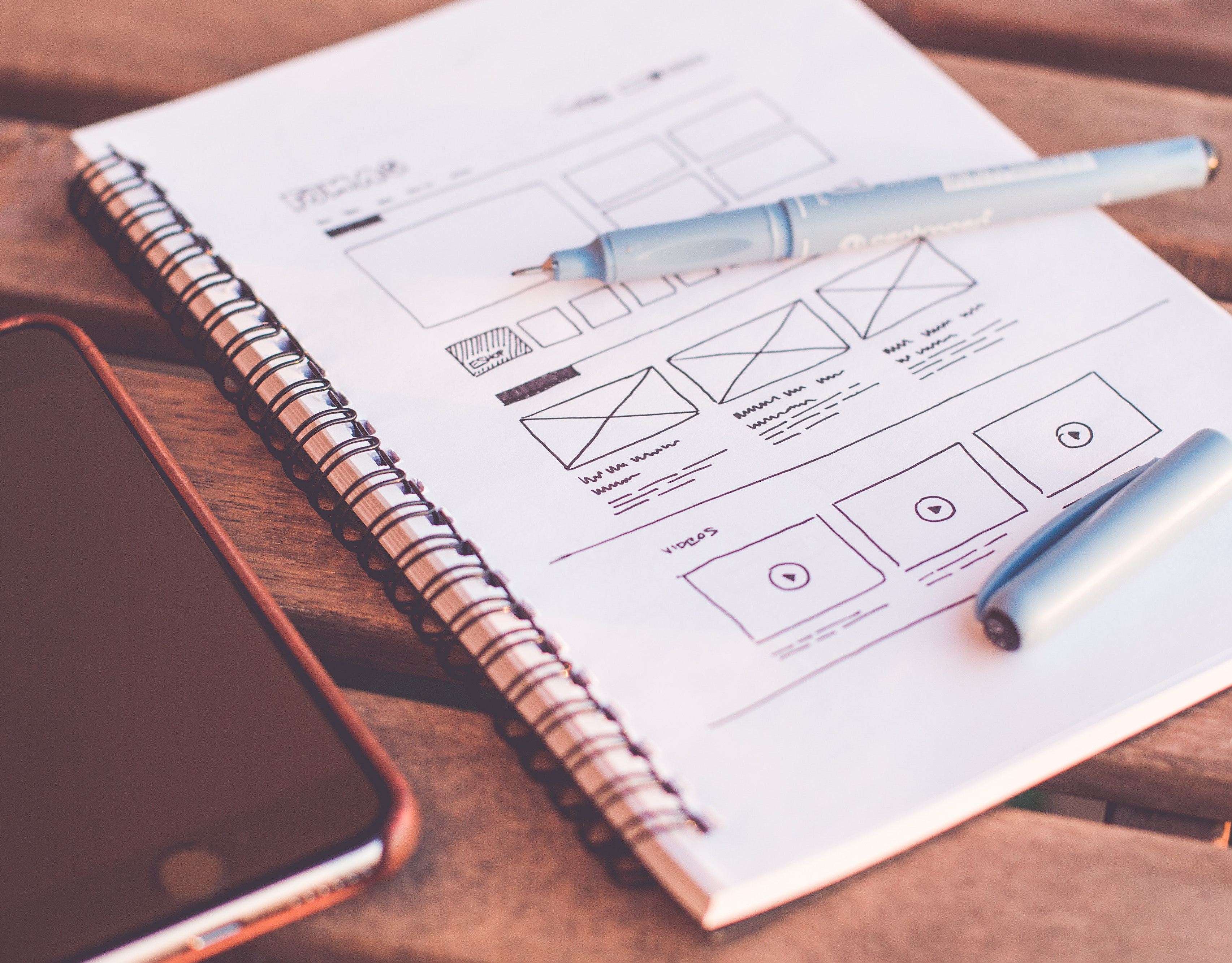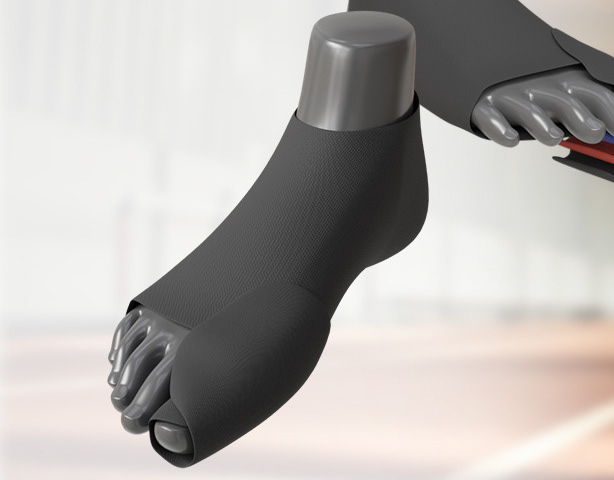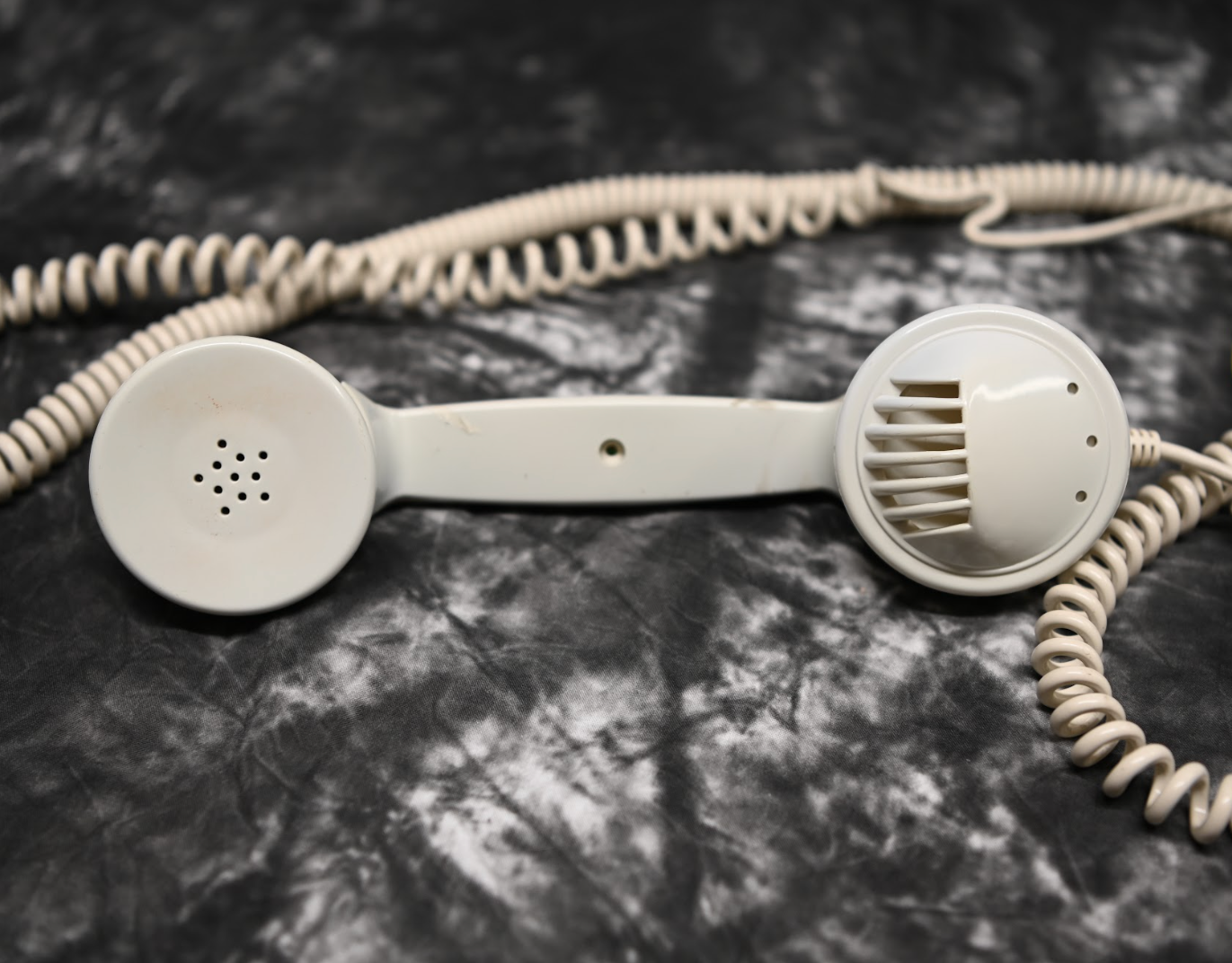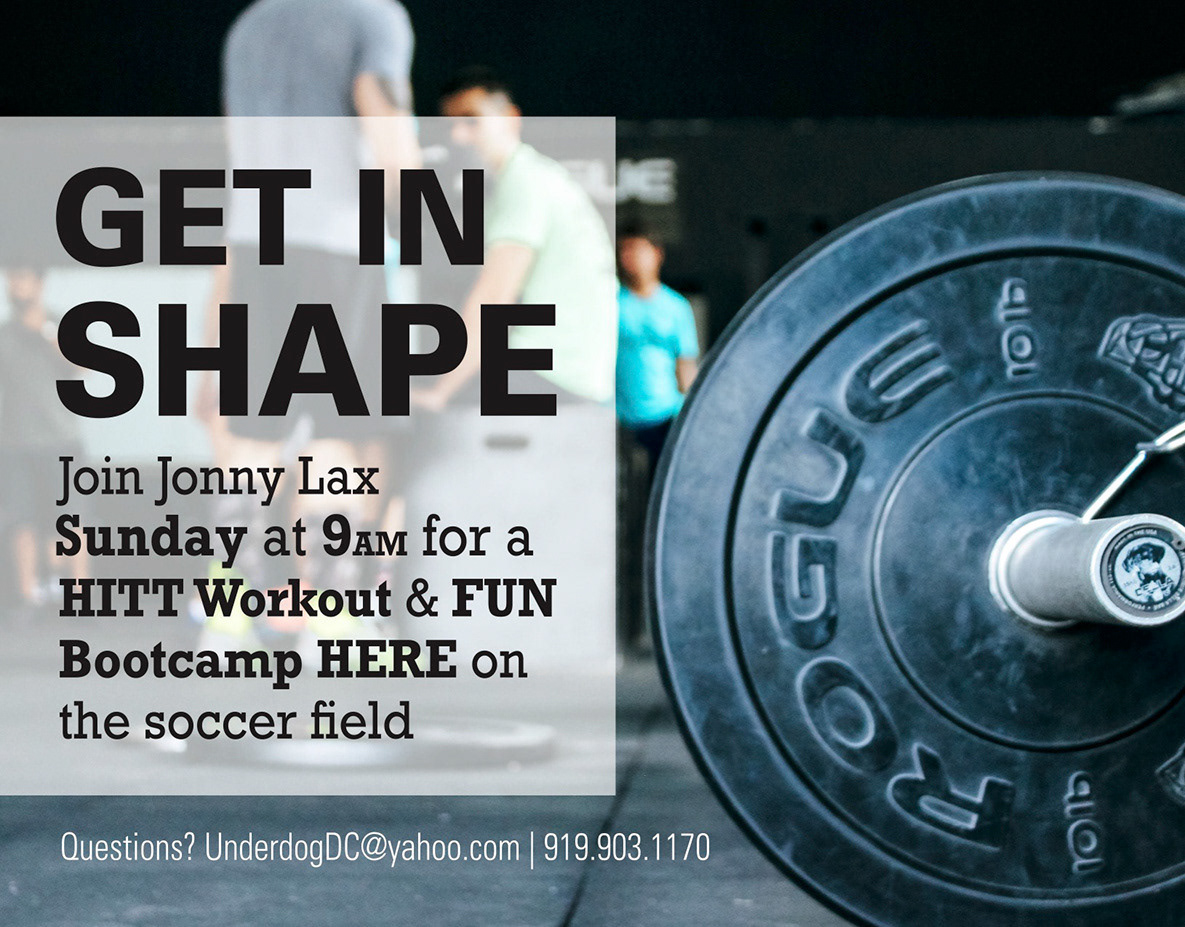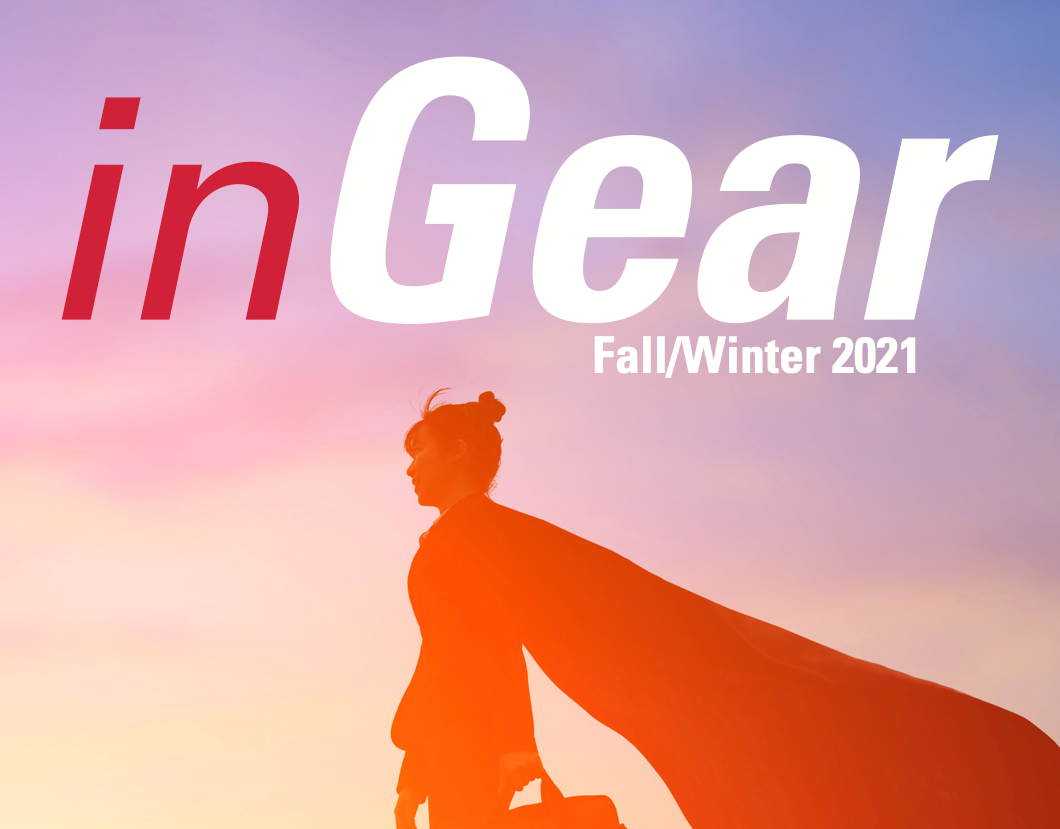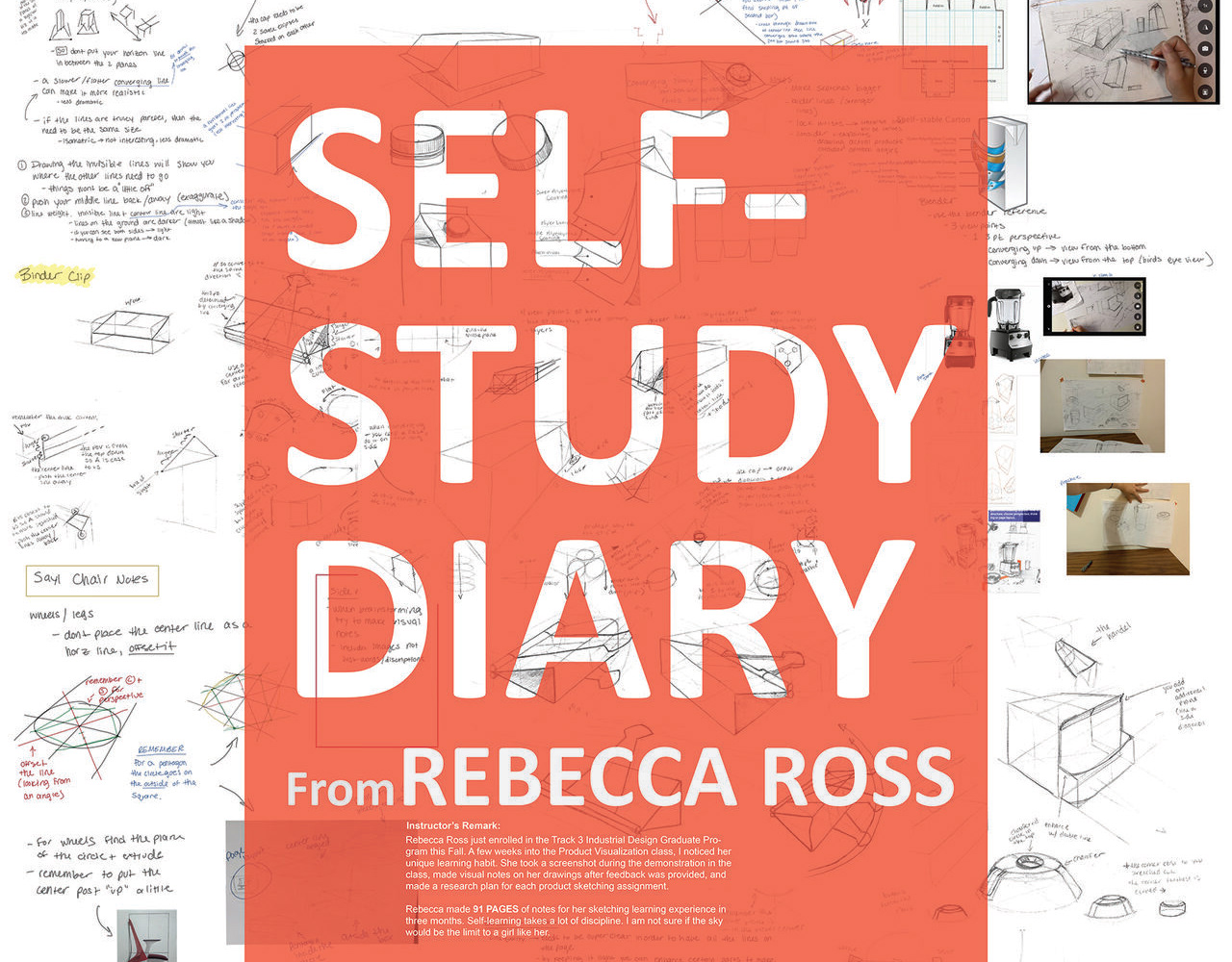CHALLENGE
Material selection and the corresponding manufacturing processes employed can have a dramatic effect on the result of the product's look and feel. Understand how one type of product can be vastly different with various materials and manufacturing processes.
SOLUTION
Examine 3 objects and complete tear downs of the products to understand how they are made and why they are different.
HOW I HELPED
Design Researcher
Concept Development
Rendering/Visualization
Bike Helmet Tear Down
PROCESS
Can we explore how a bike helmet is made?
Why helmets? Such a simple product can reduce risk of head injury by more than 50%. When it’s on your head correctly, it could save your life, so it better be made well!
Parts of a Helmet
There are three distinct parts to most helmets: shell, liner and strap. There are also less safety reliant features like the visor, padding, and fitting system.
I examined 3 types of helmet styles including mountain, skater, and child.
Mountain helmet shells are made from polycarbonate (PC), ABS, Orr other high quality plastic. The shell is typically included in the liner mold.
Skater helmet shells are typically made dome ABS or PC.
Children's helmets, since they have a quick life cycle, are made from cheaper materials such ass PET. the shell is glues or taped to the liner so it is still protective but cheaper.
Different helmet style shells

EPS Foam
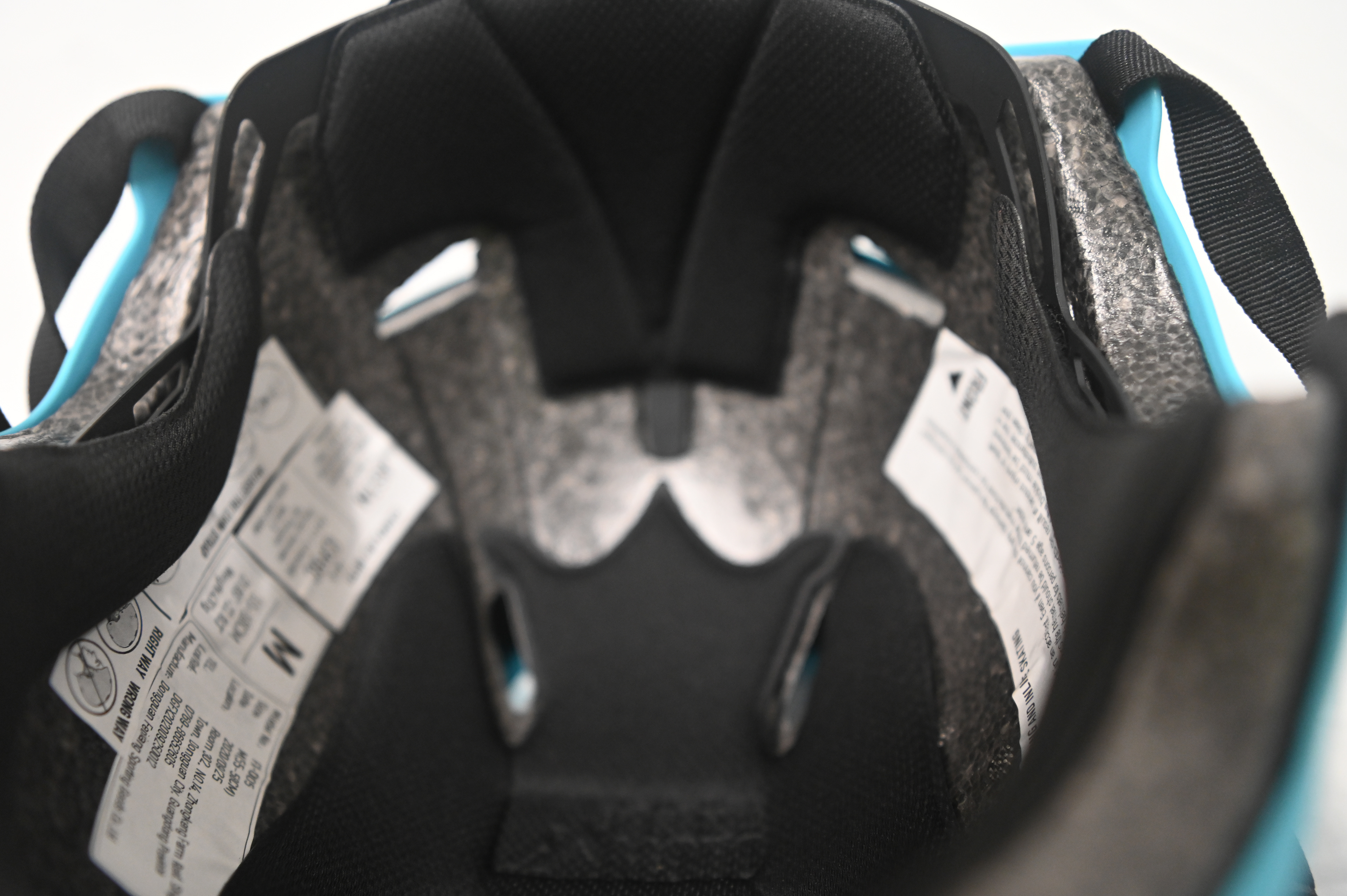
EPS Foam
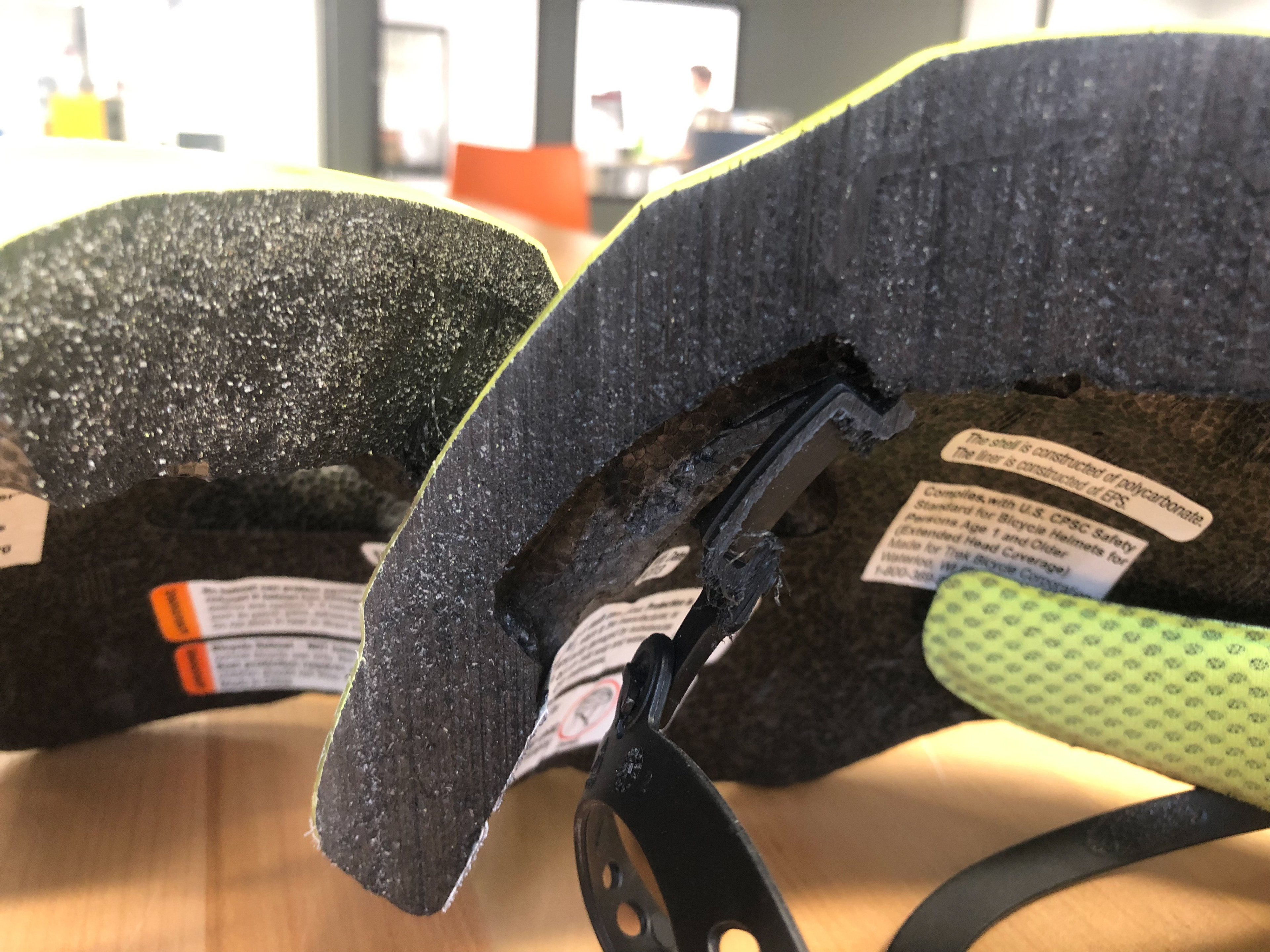
Helmet cut in half
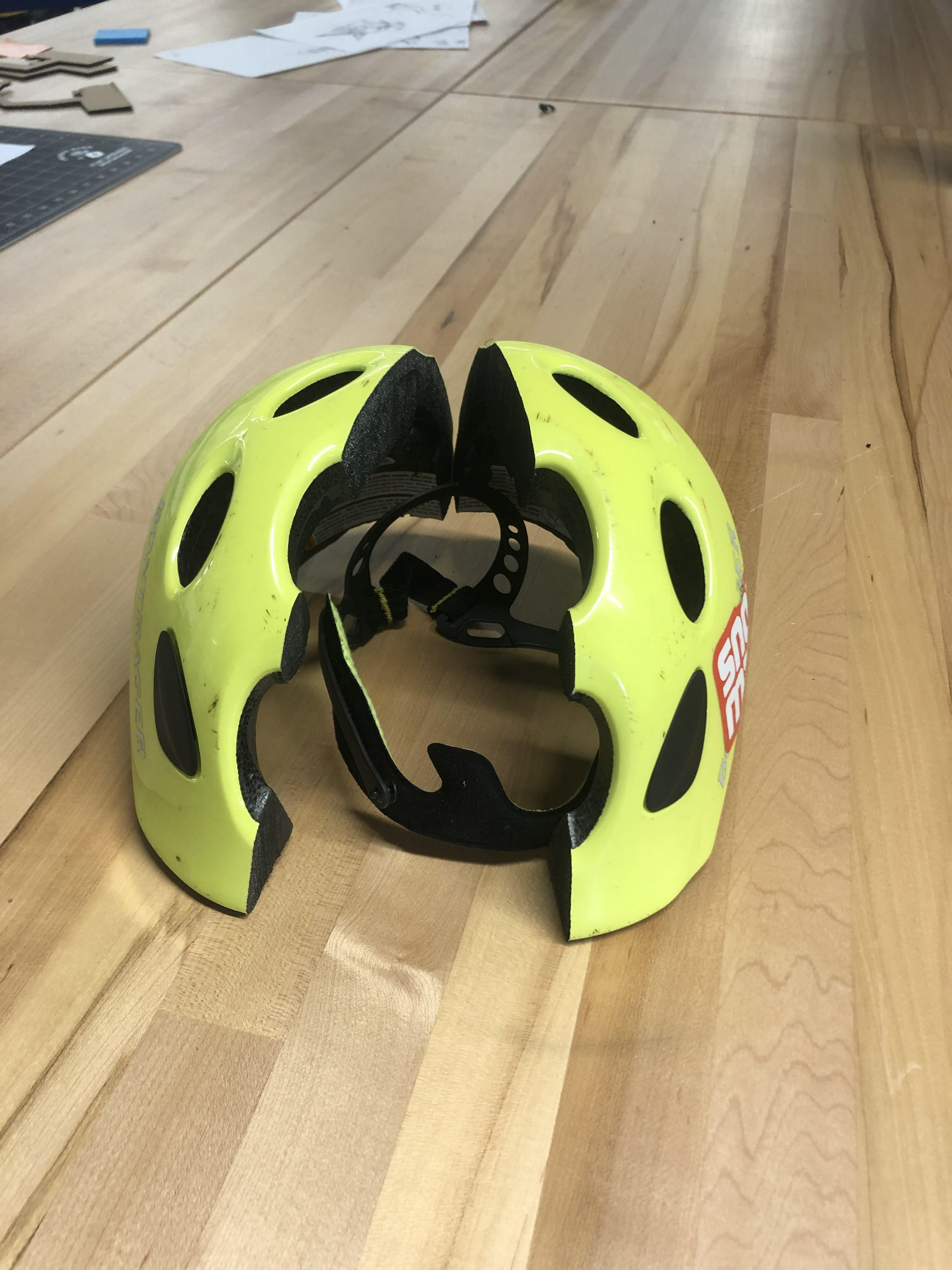
Helmet cut in half
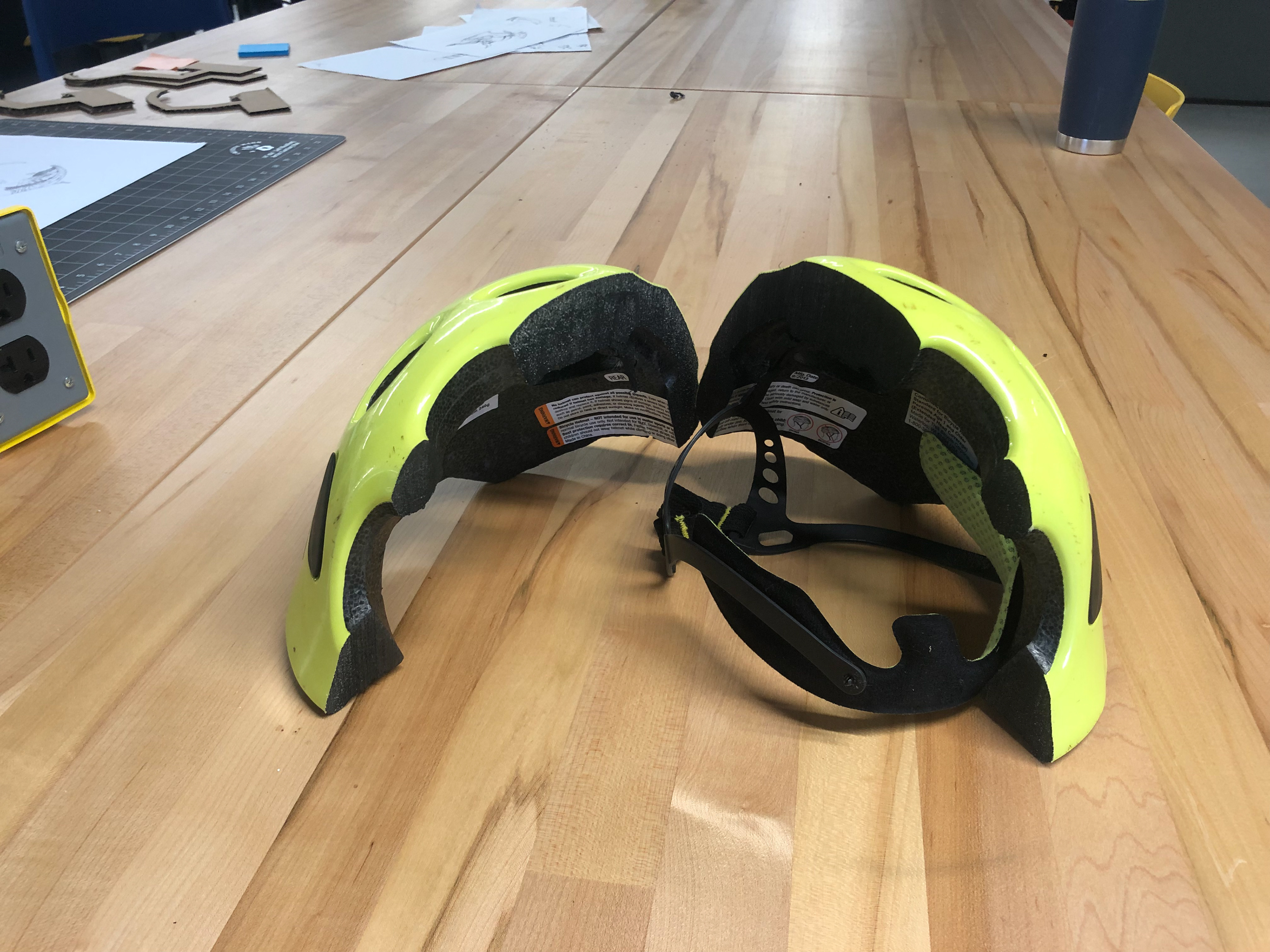
Helmet cut in half
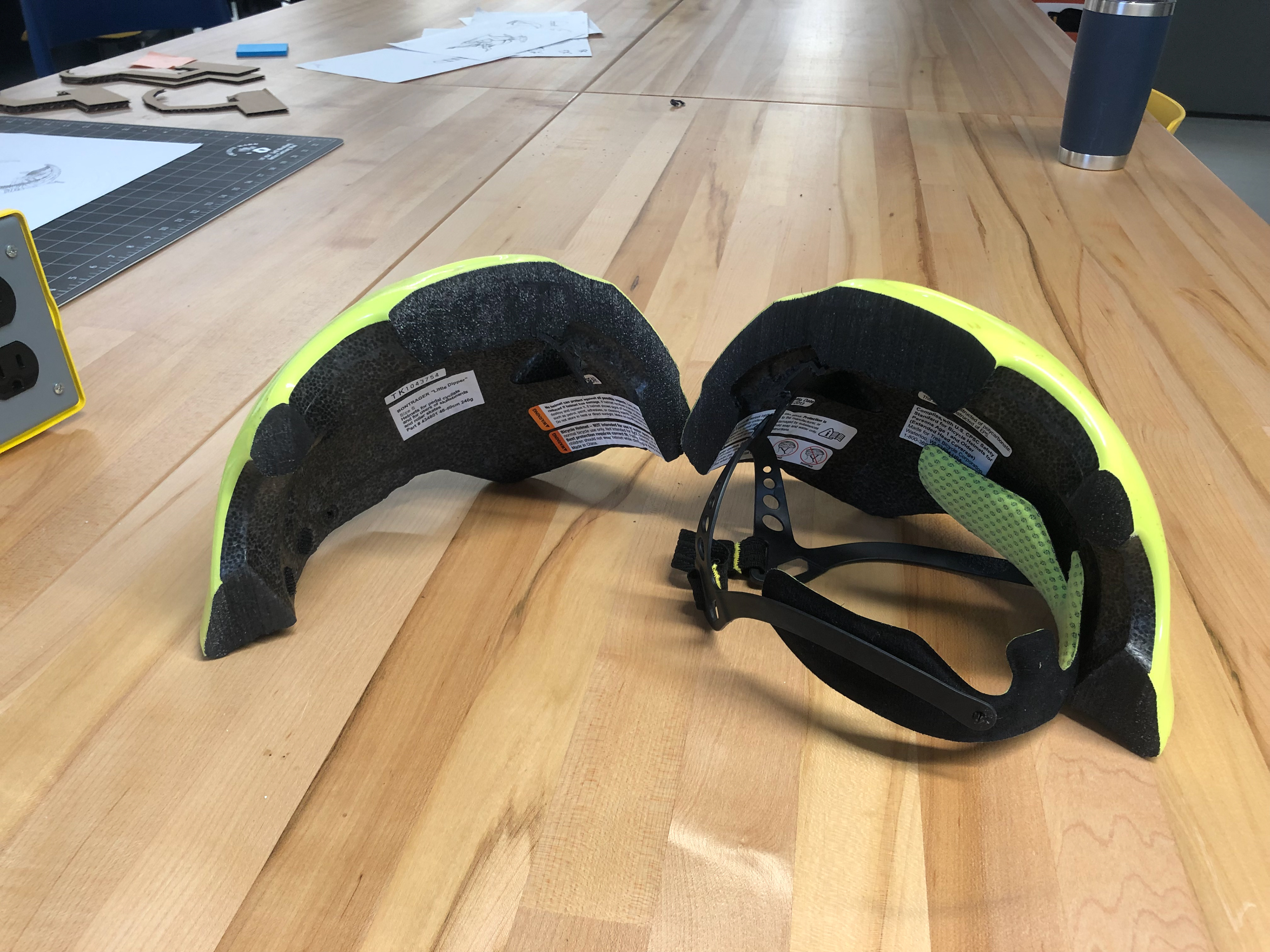
Helmet cut in half
The liner is the most important part of the helmet. It is the foam layer where the energy of the crash is managed. Bicycle helmet liners are mostly molded in Expanded Polystyrene (EPS) foam.
EPS foam's superior ability to absorb impact energy and its extreme light weight make it the best material for use in bicycle helmets. Sometimes the foam has reinforcements in it like Nylon, Polypropylene or even metal
For manufacturing, beads of EPS are placed in a mold and expanded with steam and pressure into foam.
Helmet straps are generally made of nylon or polypropylene. They all look similar, but vary considerably in fabric, surface finish, weave and other subtle characteristics.
For helmets with glued-on shells, they are added to the liner before the shell is glued on.
For molded shells, straps are added to the helmet after it comes out of the mold, usually with a more sophisticated anchor that sits on top of the helmet shell after the strap is threaded through or the straps riveted or otherwise attached to the shell.
The buckle is the last major piece of the helmet, and it is added when the straps are installed. Most current bike helmet buckles are plastic like POM or nylon buckles.
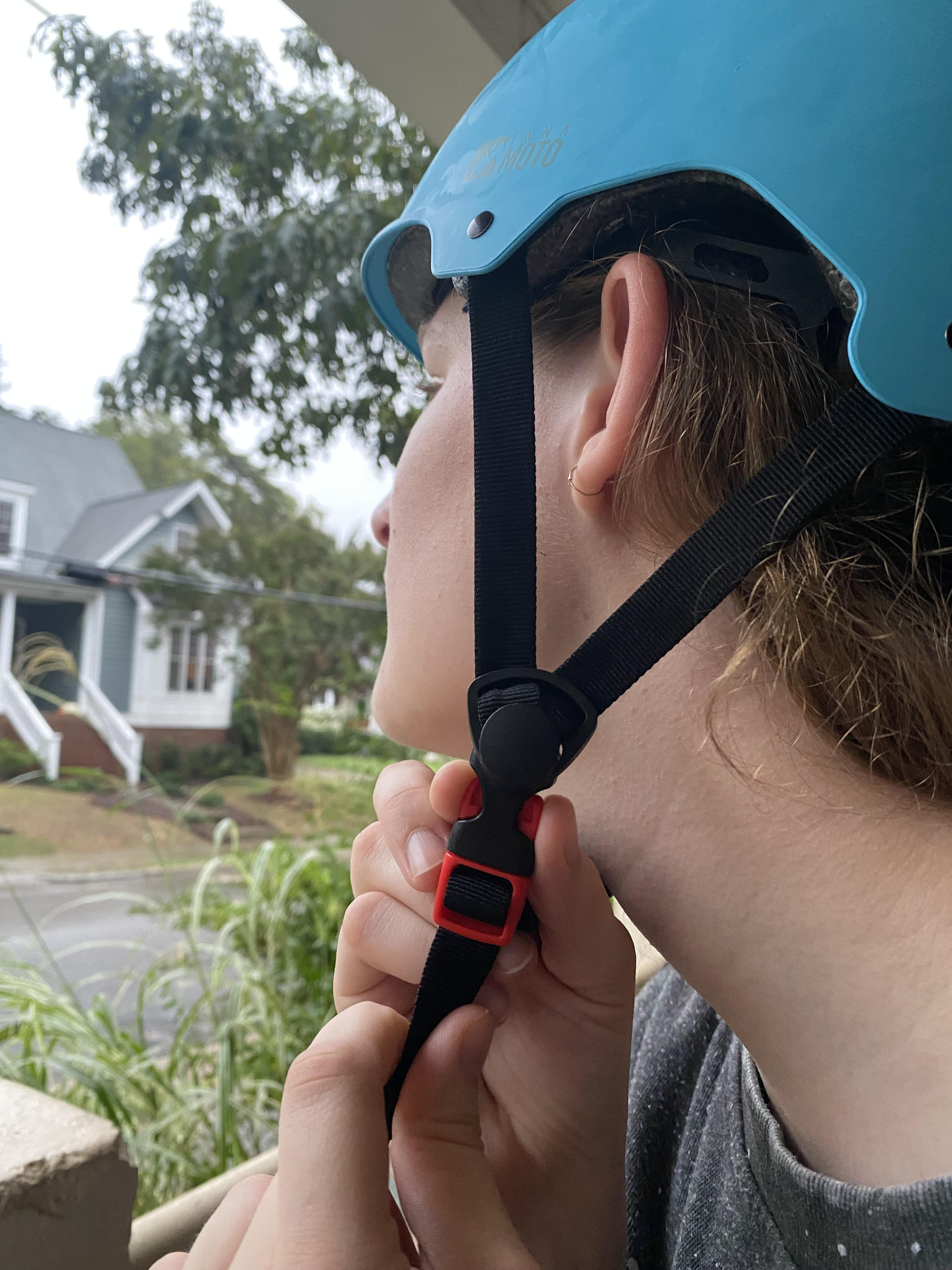
Snap buckle on helmet
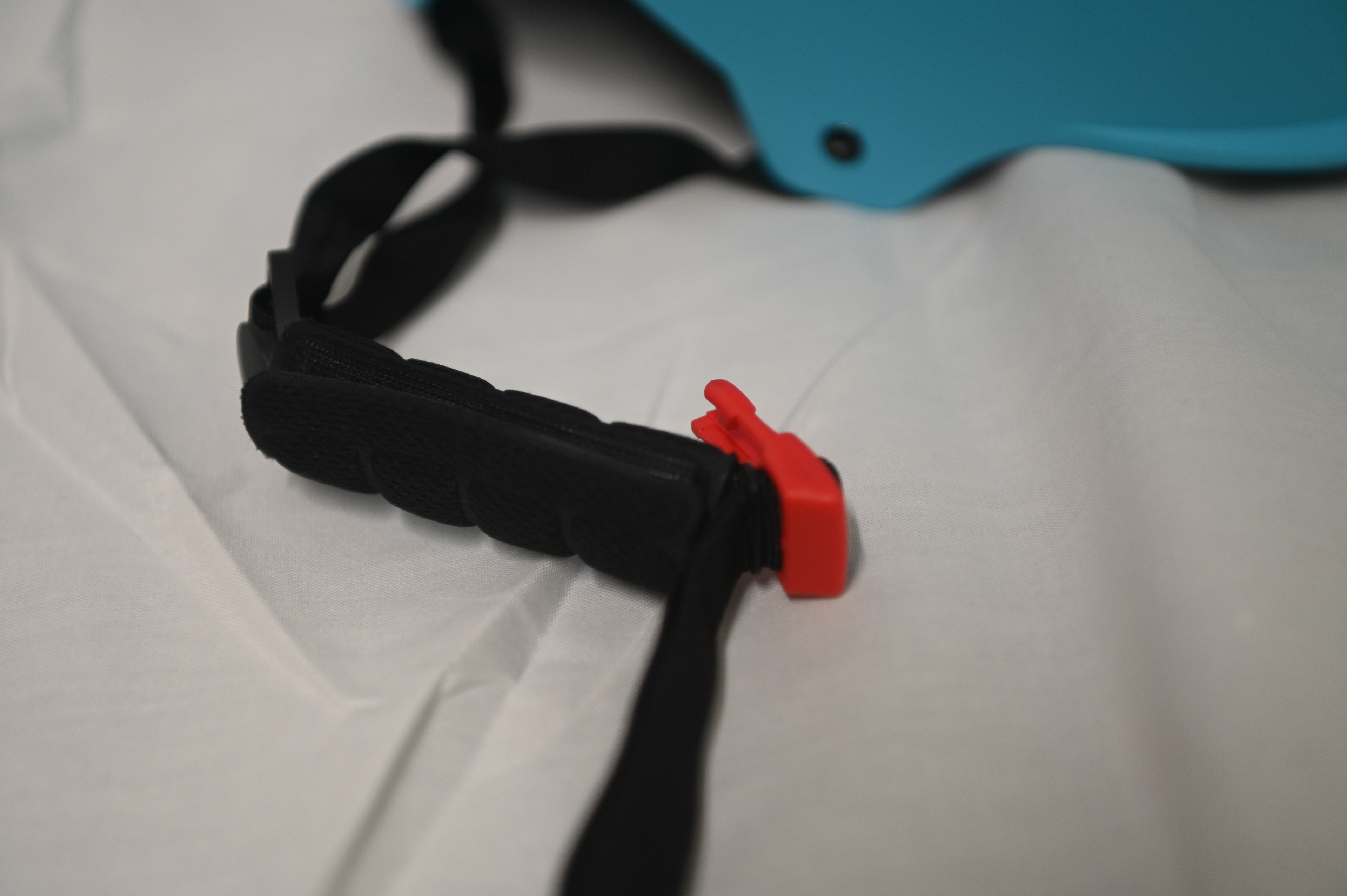
Snap buckle on helmet
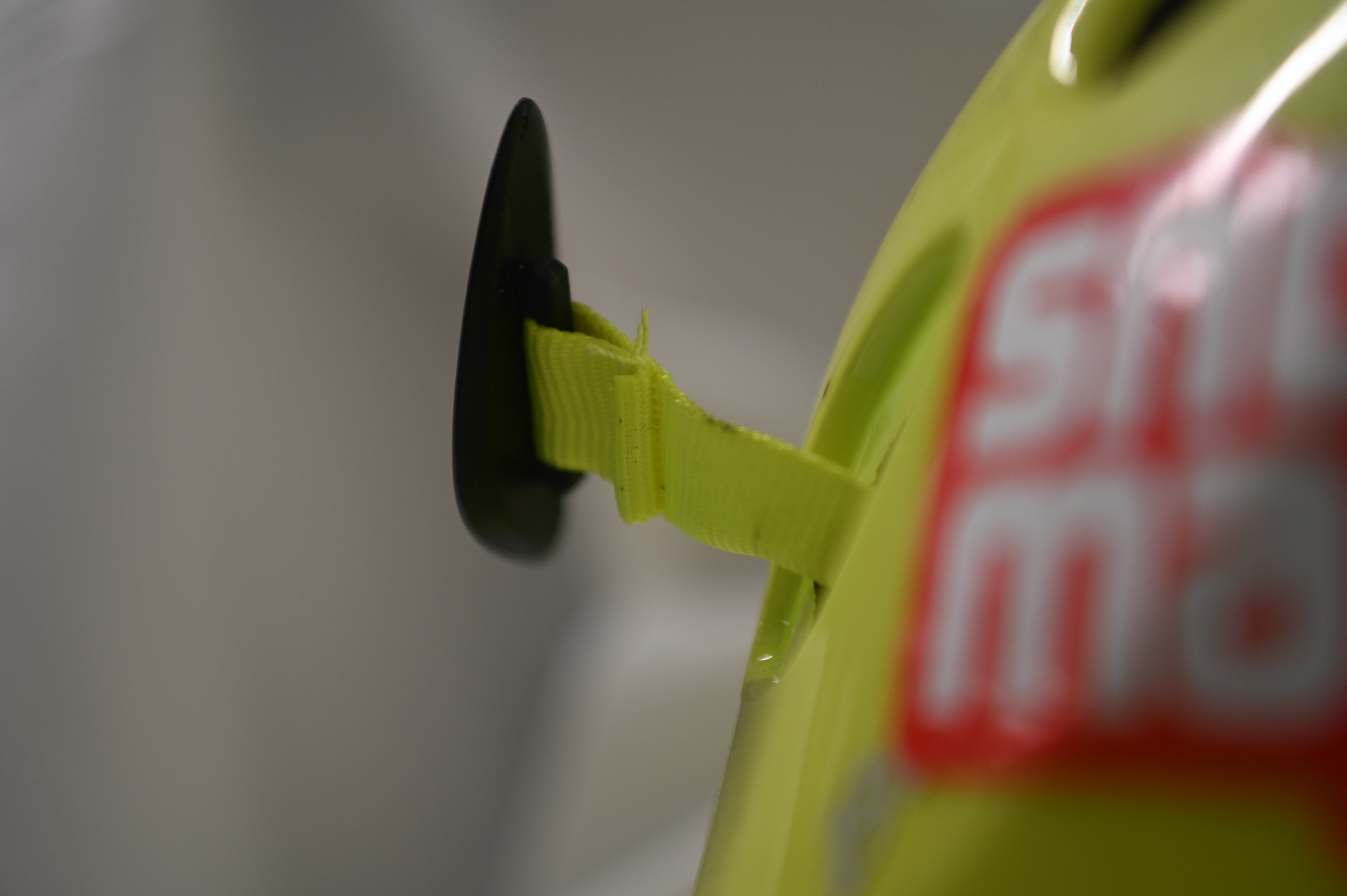
Helmet Strap Anchors
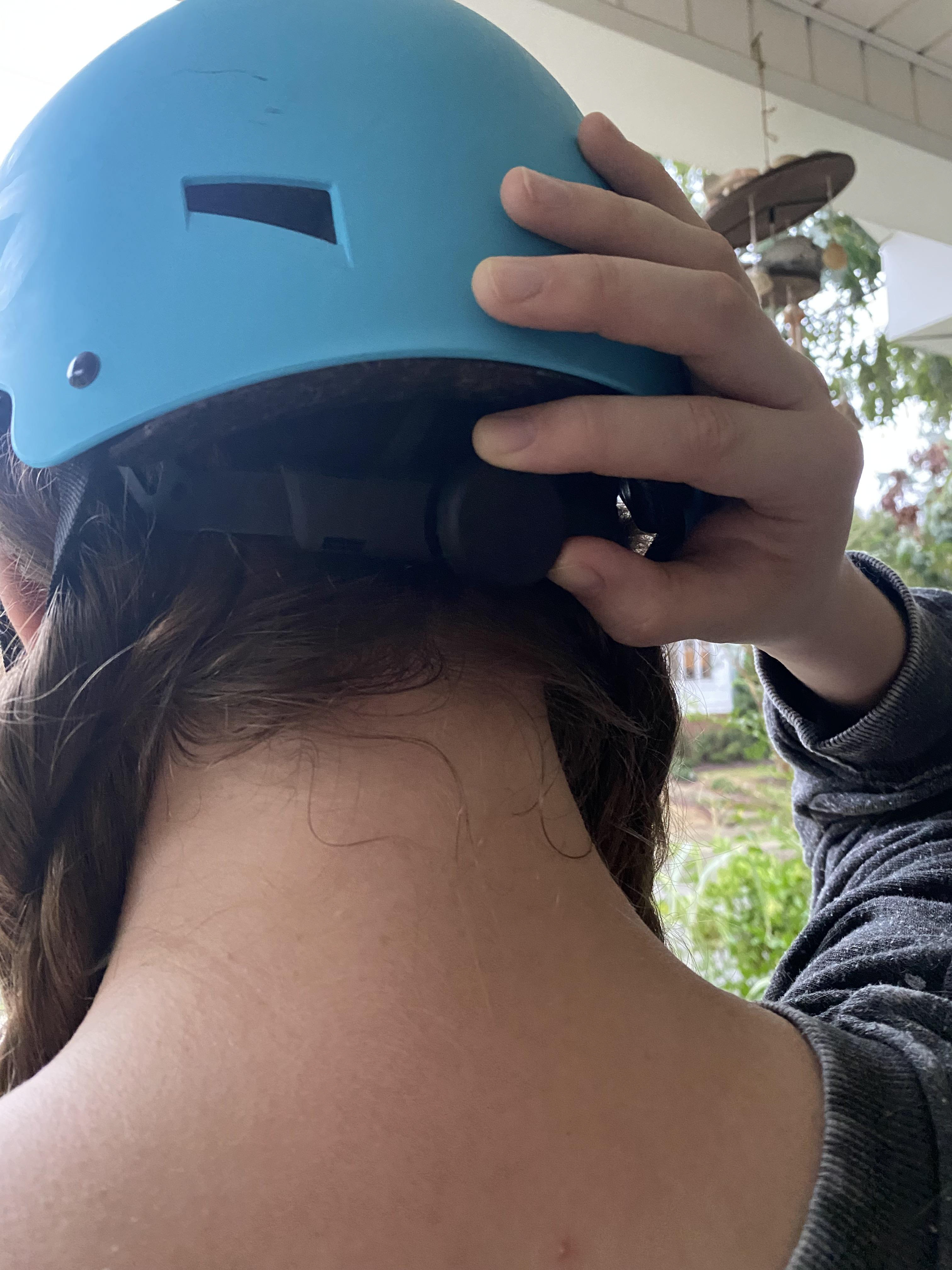
User tightening the occipital stabilizer
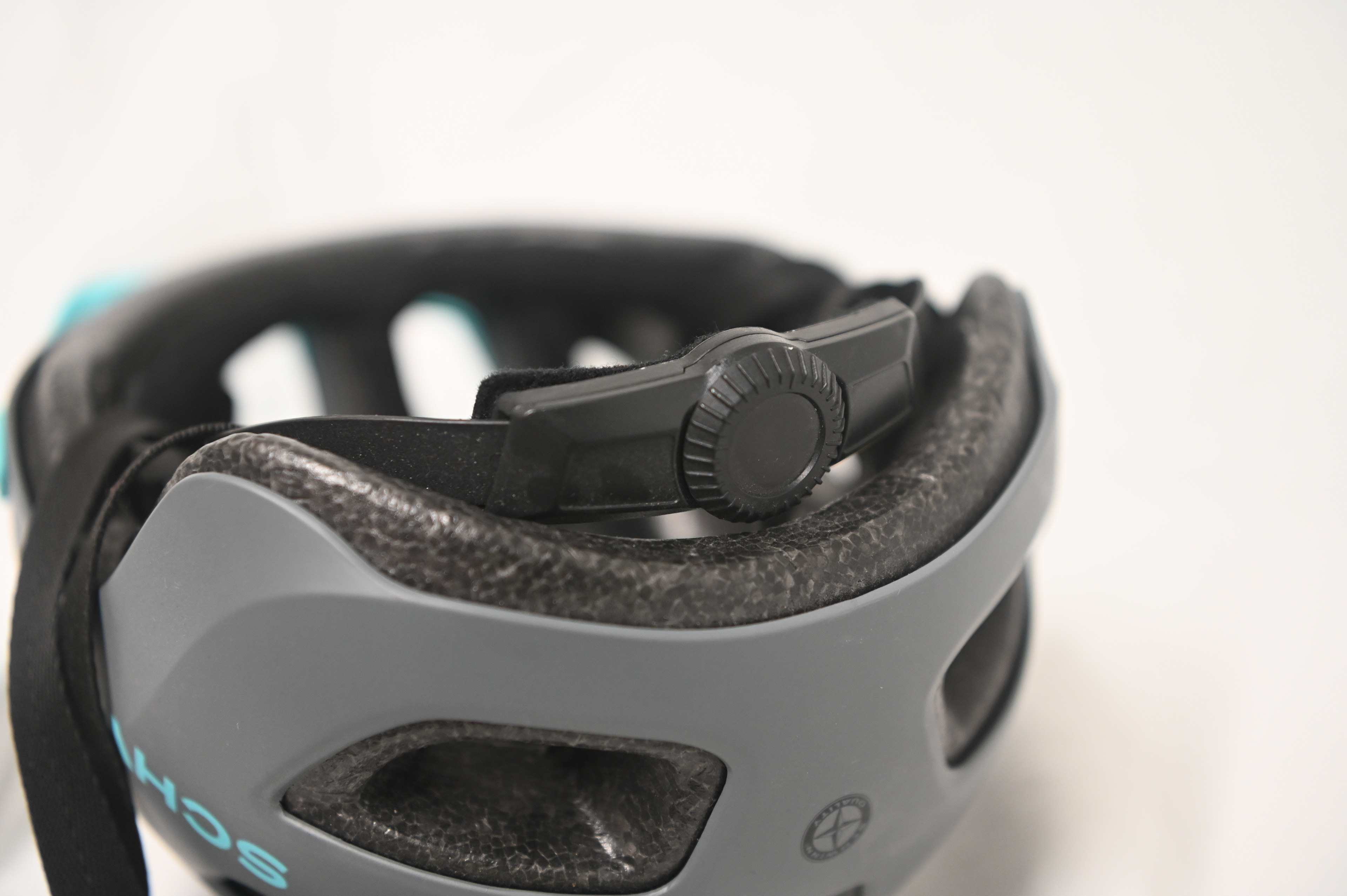
Occipital Stabilizer
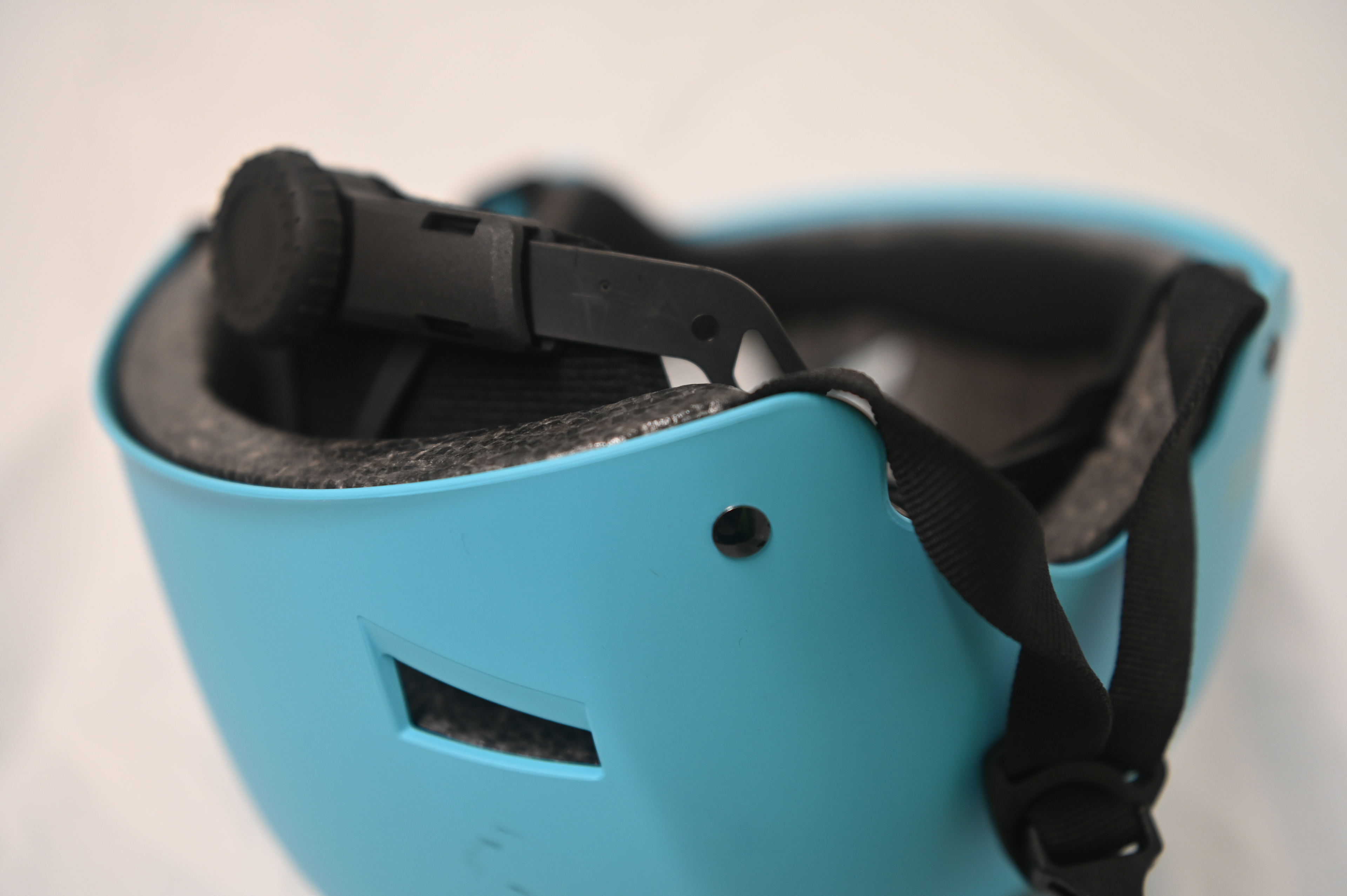
Occipital stabilizer held in place with overmoulding and a rivet.
Attached to the rear of most middle to high-end helmets is an occipital stabilizer, varying from just a strap to a complex plastic piece, that engages the occipital lobe of the head (the lump on the back of the head). These can have many forms of adjustment, including knobs, cams, toothed sliders and more.
Usually it is made from Low Density PolyEthylene (LDPE), Polyethylene Terephthalate (PET), PC, Polyoxymethylene (POM), or ABS. It depends on rigidity needed and is riveted or molded inside foam.
Fitting pads usually get hook-and-loop mounts glued inside the helmet and then the pads are added. Some cheap helmets have the pads glued directly to the interior of the liner. A few have an interior cloth or plastic liner applied.
The visor is added during the manufacturing process or included as an assembly process. Typically it is added with detachable rivets.
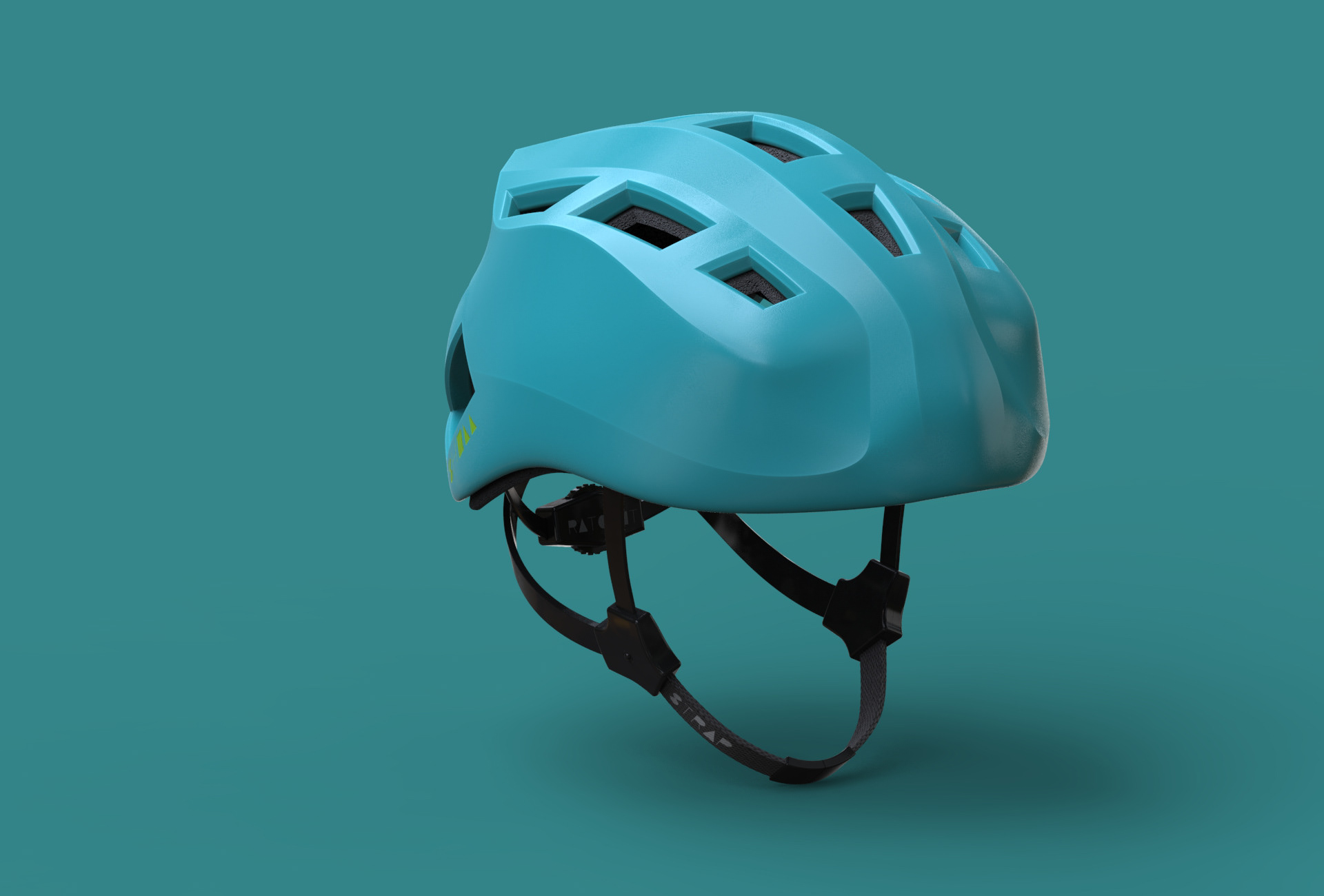
Helmet made in Fusion 360
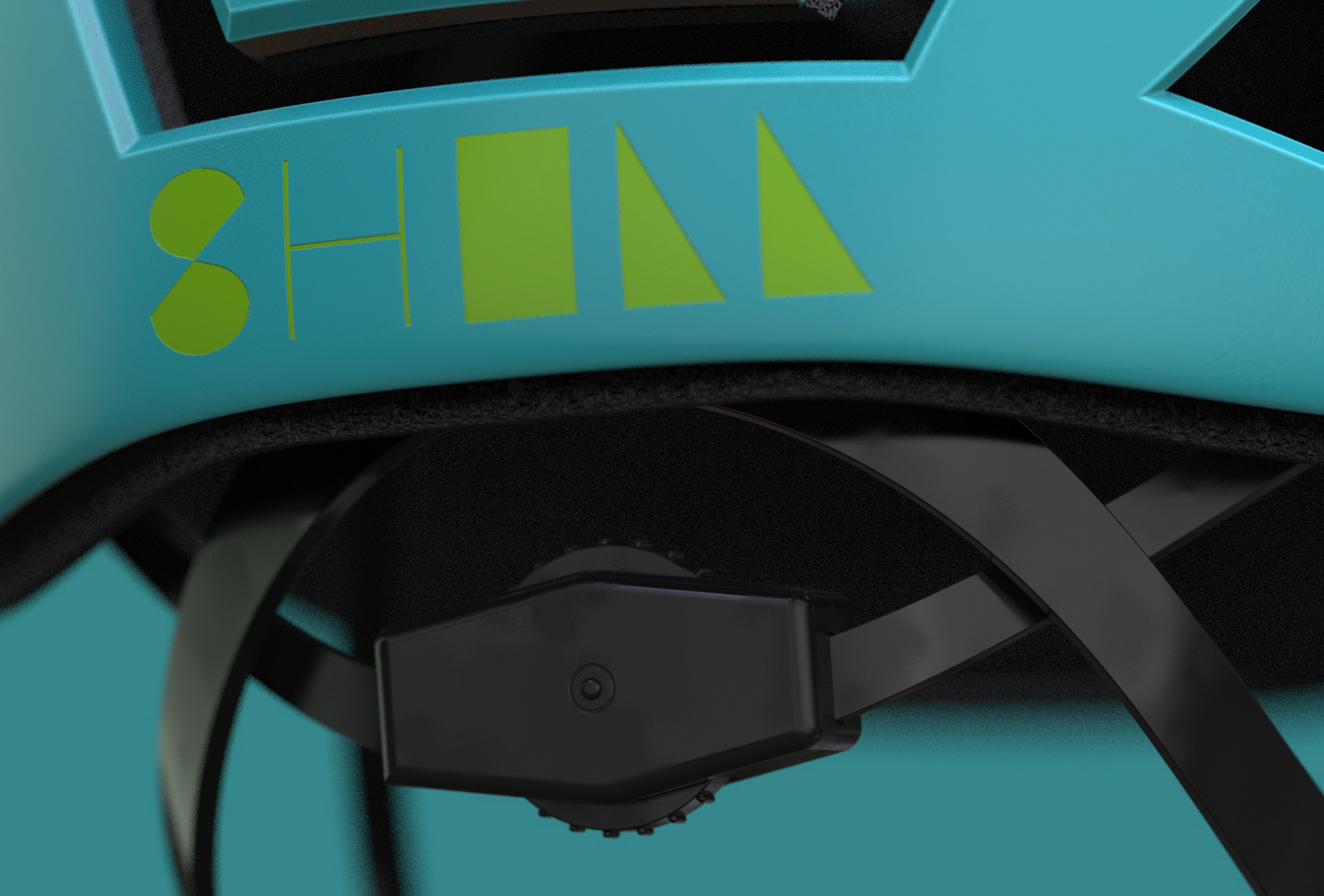
Logo's added in the location of helmet parts
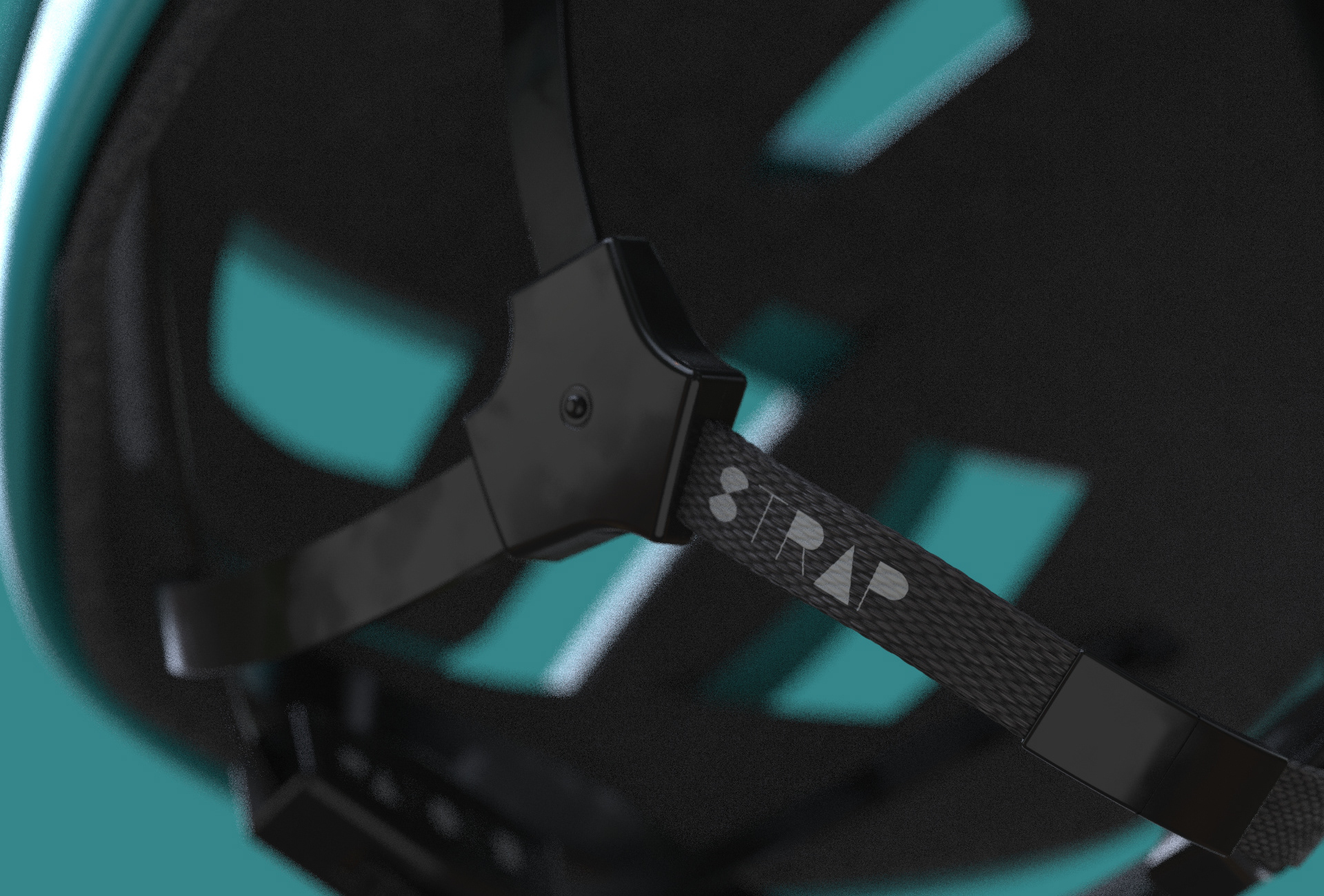
Logo's added in the location of helmet parts
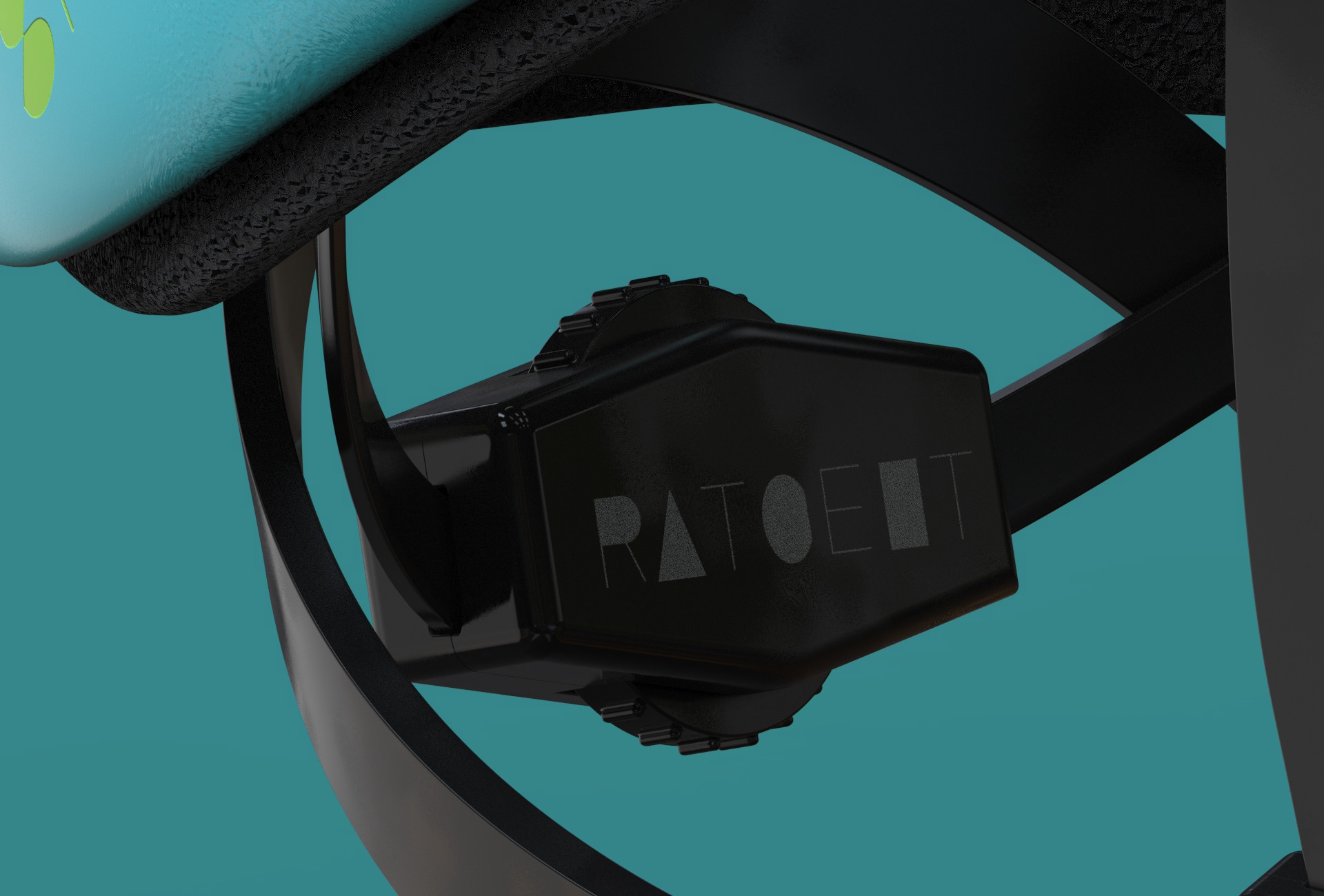
Logo's added in the location of helmet parts
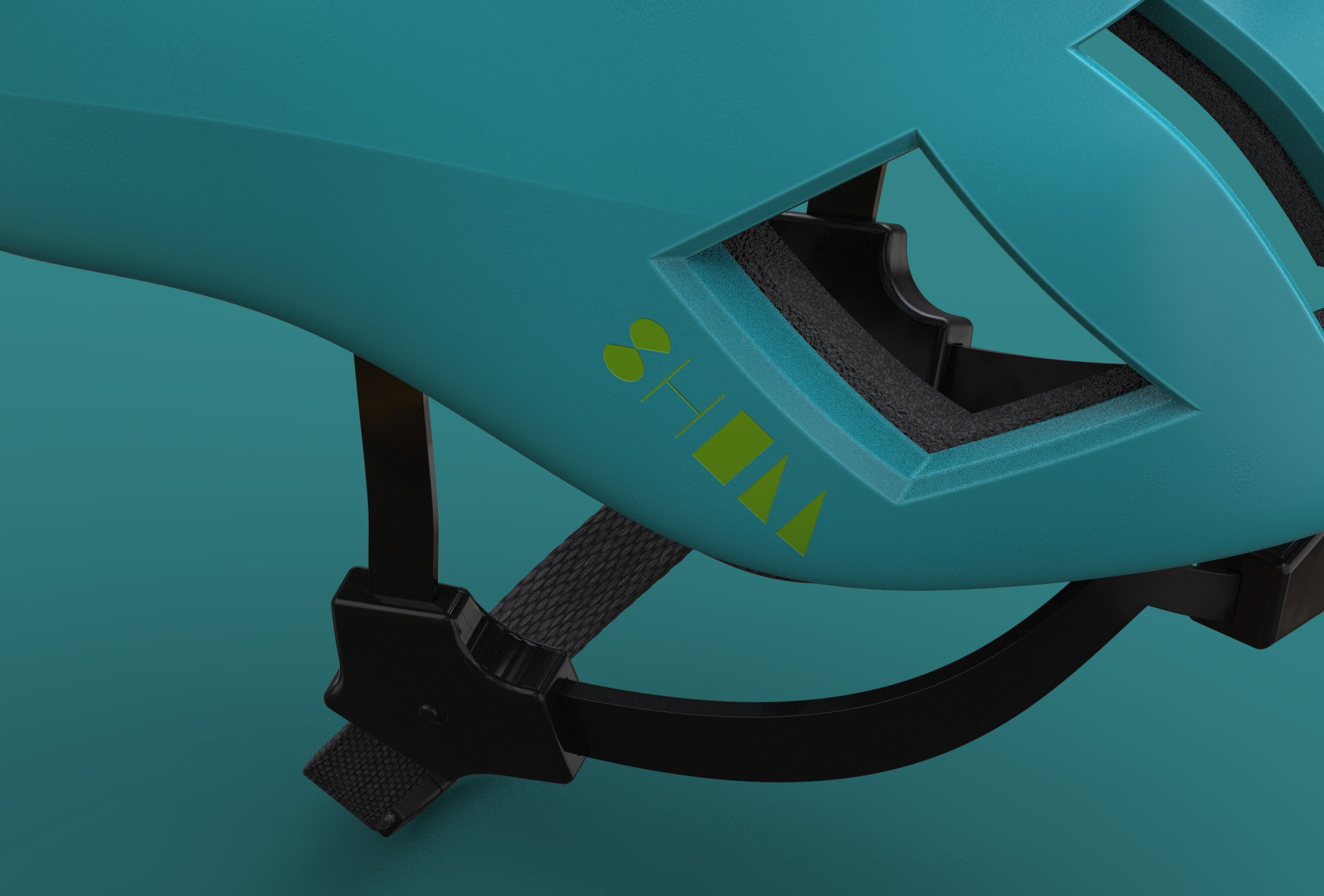
Logo's added in the location of helmet parts
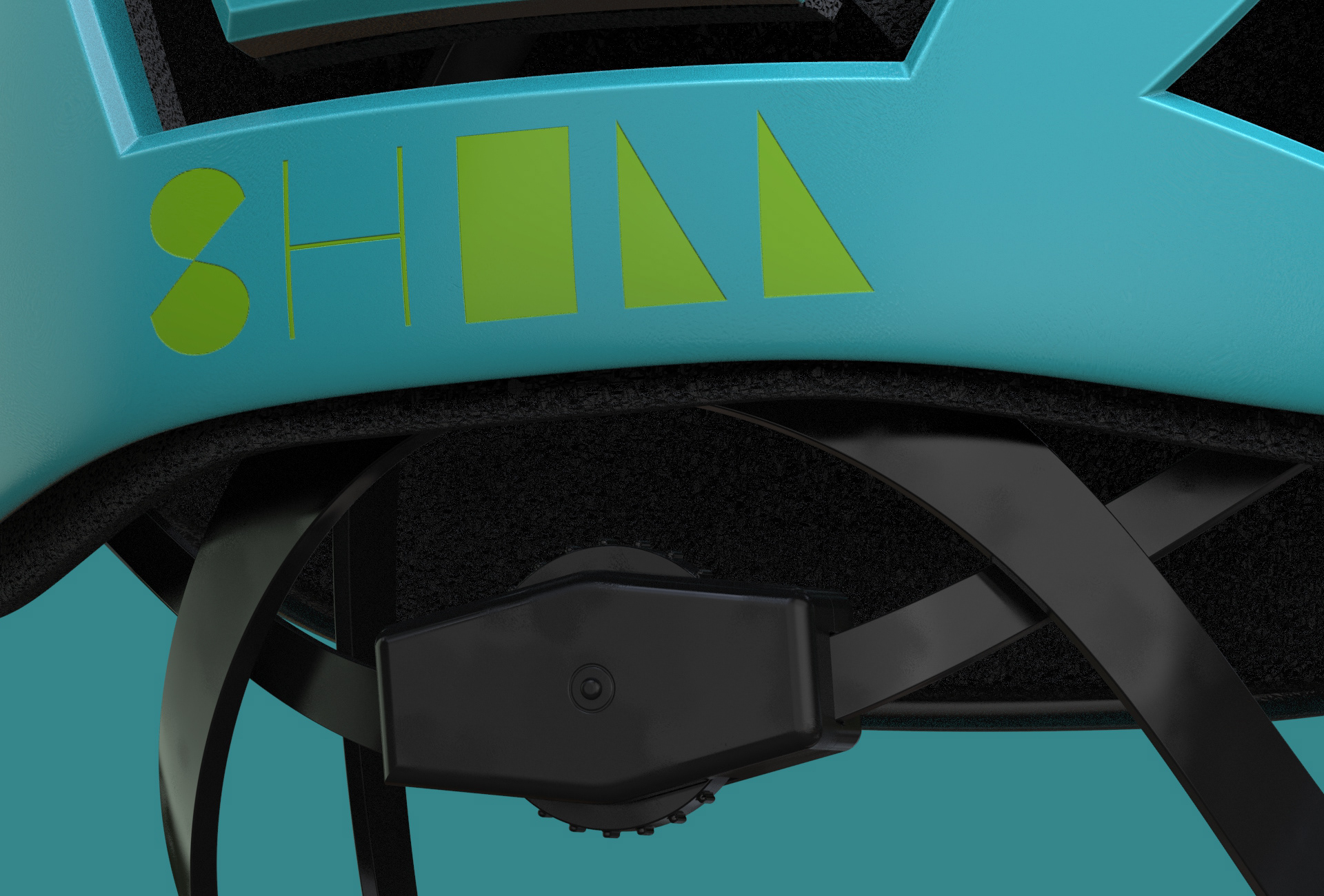
Logo's added in the location of helmet parts
To create a more education helmet depicting each of these parts, I created and rendered a helmet with custom logos using Fusion 360 sculpting tools.
